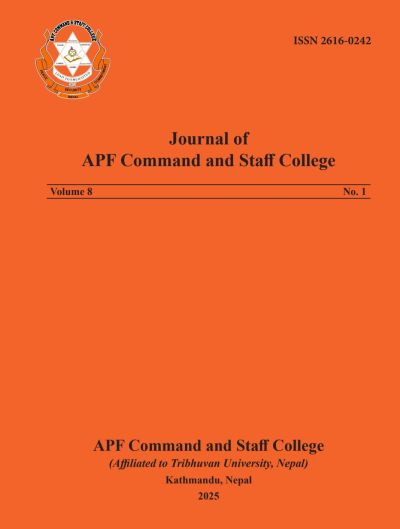Innovating Incident Command System for Nepal: Adopting Global Practices to Local
DOI:
https://doi.org/10.3126/japfcsc.v8i1.77600Keywords:
Incident command system, disaster response, DRR, NDRRMA, NepalAbstract
Nepal’s geographical and geological conditions, intensified by climate change, render it susceptible to frequent and severe natural hazards, leading to numerous cascading disasters that cause significant loss of life and economic damage yearly. Notwithstanding attempts to enhance disaster preparedness and response, current systems frequently fail to cope with the intricacies of managing complex disaster scenarios. The study, utilizing qualitative methods such as a comprehensive literature review, content analysis of existing laws, regulations, and policies, as well as interviews with key informants, concludes that a robust mechanism, specifically an Incident Command System, is essential for effective national response. This system offers a standardized, hierarchical framework that unifies personnel, facilities, equipment, and communications, enhancing coordination and efficiency in disaster response efforts. The system prioritizes standardized terminology, a feasible span of control, and thorough resource management, facilitating seamless collaboration among all responding agencies. The lack of a command structure results in coordination challenges, information deficiencies, and ineffective resource distribution during emergencies.
Downloads
Downloads
Published
How to Cite
Issue
Section
License
Copyright (c) 2025 The Author

This work is licensed under a Creative Commons Attribution 4.0 International License.




